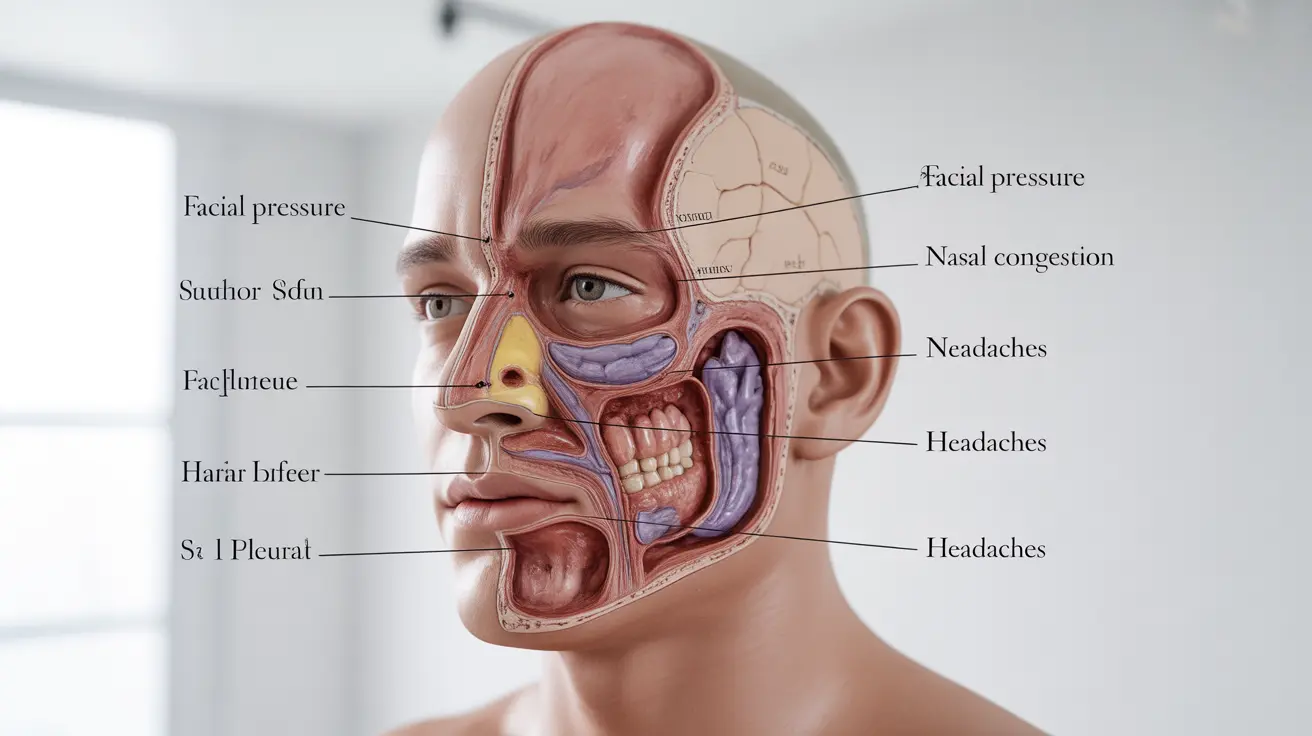Sinus infections, medically known as sinusitis, affect millions of Americans each year and can significantly impact daily life. These inflammatory conditions occur when the tissue lining your sinuses becomes swollen or infected, leading to a range of uncomfortable symptoms that can persist for days or even weeks.
Recognizing sinus infection symptoms early is crucial for effective treatment and preventing complications. While many people initially mistake these symptoms for a common cold, understanding the distinct characteristics of sinusitis can help you seek appropriate care and find relief more quickly.
Recognizing Common Sinus Infection Symptoms
Sinus infection symptoms typically develop gradually and can vary in intensity depending on the severity and type of infection. The most characteristic signs involve facial pressure and congestion that often worsen when bending forward or lying down.
Nasal congestion represents one of the primary indicators, often accompanied by thick, discolored mucus that ranges from yellow to green. This discharge differs significantly from the clear, watery mucus associated with viral infections or allergies.
Facial pain and pressure concentrate around the affected sinuses, creating a distinctive feeling of fullness or tenderness. This discomfort typically intensifies around the forehead, cheeks, between the eyes, or upper jaw area, depending on which sinus cavities are inflamed.
Headaches frequently accompany sinus infections, particularly in the morning or when changing positions quickly. These headaches often feel different from typical tension headaches, presenting with a deep, throbbing sensation that correlates with sinus pressure.
Additional Signs and Complications
Beyond the primary symptoms, sinus infections can manifest through several secondary indicators that many people overlook. Reduced sense of smell and taste commonly occurs due to nasal inflammation blocking olfactory receptors.
Bad breath, known medically as halitosis, frequently develops as bacteria multiply within the infected sinuses. This symptom often surprises patients who maintain good oral hygiene but notice persistent unpleasant breath odors.
Dental pain, particularly in the upper teeth, can result from maxillary sinus inflammation pressing against tooth roots. This connection explains why some individuals initially suspect dental problems before realizing they have a sinus infection.
Fatigue and general malaise often accompany sinus infections as the body's immune system works to fight the infection. Some patients also experience low-grade fever, though this is more common in acute bacterial sinusitis.
Distinguishing Sinus Infections from Common Colds
Understanding the differences between cold and sinus infection symptoms helps ensure appropriate treatment approaches. While both conditions share some similarities, several key distinctions can guide your assessment.
Duration represents a significant differentiating factor. Cold symptoms typically improve within seven to ten days, while sinus infection symptoms persist beyond this timeframe and may worsen after initial improvement.
Mucus characteristics provide another important clue. Cold-related nasal discharge usually starts clear and may briefly become colored before clearing again. Sinus infections produce consistently thick, colored mucus throughout the illness.
Location and intensity of facial pressure also differ. Colds rarely cause significant facial pain or pressure, while sinus infections create pronounced discomfort in specific sinus regions that worsens with movement or position changes.
Types and Severity Indicators
Sinus infections fall into several categories based on duration and underlying causes. Acute sinusitis lasts fewer than four weeks and often follows viral respiratory infections. Subacute sinusitis persists between four and twelve weeks, while chronic sinusitis continues beyond twelve weeks or recurs frequently.
Bacterial sinus infections typically produce more severe symptoms, including higher fever, intense facial pain, and thick, persistently colored discharge. Viral sinusitis usually presents with milder symptoms that fluctuate in intensity.
Allergic sinusitis often accompanies seasonal allergies and may include additional symptoms like itchy, watery eyes and sneezing. This type tends to recur during specific times of year when allergen exposure increases.
Prevention and Risk Factors
Several factors increase susceptibility to sinus infections, including anatomical variations like deviated nasal septums or nasal polyps. Environmental factors such as air pollution, cigarette smoke, and dry air can also contribute to sinus inflammation.
Immune system compromise from illness, stress, or certain medications may increase infection risk. Additionally, frequent swimming in chlorinated pools or diving can irritate sinus tissues and promote bacterial growth.
Preventive measures include maintaining good nasal hygiene through gentle irrigation, using humidifiers during dry seasons, and avoiding known irritants. Managing underlying allergies also helps reduce chronic sinus inflammation that predisposes to infections.
Frequently Asked Questions
What are the most common symptoms of a sinus infection?
The most common sinus infection symptoms include persistent nasal congestion with thick, discolored mucus, facial pain and pressure around the eyes, forehead, or cheeks, headaches that worsen when bending forward, reduced sense of smell and taste, and general fatigue. Many people also experience bad breath and upper tooth pain due to sinus pressure.
How can I tell the difference between a cold and a sinus infection?
Key differences include symptom duration (colds typically resolve within 7-10 days while sinus infections persist longer), mucus characteristics (colds produce clear to briefly colored discharge while sinus infections cause consistently thick, colored mucus), and the presence of significant facial pressure and pain, which rarely occurs with common colds.
When should I see a doctor for sinus infection symptoms?
Seek medical attention if symptoms persist beyond 10 days, worsen after initial improvement, include high fever (over 101.3°F), severe headache or facial pain, vision changes, neck stiffness, or if you develop signs of complications. Those with compromised immune systems or chronic conditions should consult healthcare providers earlier.
What home remedies help relieve sinus infection symptoms?
Effective home remedies include nasal irrigation with saline solution, steam inhalation, staying well-hydrated, using humidifiers, applying warm compresses to affected facial areas, and sleeping with your head elevated. Over-the-counter pain relievers and decongestants may also provide symptom relief when used as directed.
Can sinus infections cause bad breath and tooth pain?
Yes, sinus infections commonly cause both bad breath and tooth pain. Bad breath results from bacterial growth and infected mucus in the sinuses, while tooth pain typically affects upper teeth due to maxillary sinus inflammation pressing against tooth roots. These symptoms often resolve as the sinus infection clears.




